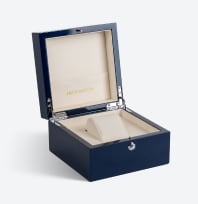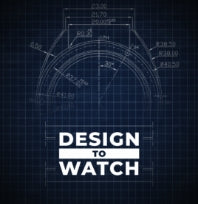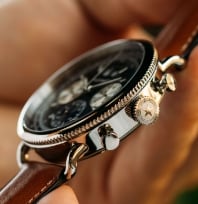Watches have been a staple in fashion for hundreds of years and, just like anything with such a long record, that comes with a lot of history and vocabulary. Why, for example, do collectors value automatic watches more highly than quartz watches when quartz watches are almost always more precise?
Below, we'll go over a bit of the history between automatic and quartz watches, some keywords frequently used in horology (aka the art of making watches), and what the common consensus is on them now. Let's start with a little bit of history.
A Brief History of Watches
The first wristwatch was made in the early 1800s as a gift to the Queen of Naples from Swiss horologist Abraham-Louis Breguet. Because the watch was intended for a queen, wristwatches were commonly viewed as women's luxury items, whereas men would primarily wear pocket watches.
That, like so many other things, changed during the onset of WW1. Soldiers had to carry an enormous amount of equipment, and one such item was a pocket watch. These were fragile, clunky to take out and put back in their pack or coat, and were viewed as just one more item to carry around.
And so, the trench watch was born. They had canvas straps, were significantly more durable than pocket watches at the time, and, because of their placement on their wrist, no longer had to be stowed when not in use. They became a permanent fixture on the soldier's arms.
After the war, American soldiers continued to wear their wristwatches as they'd grown so used to wearing them. Because of this, watches became something of a cultural icon. Seeing these victorious men-at-arms returning home, wearing wristwatches, created an image of masculinity and power, and so watches became mainstream pieces for men to wear.
The Quartz Crisis
After the war, the technology of watches accelerated rapidly. Because of their prominence amongst soldiers, they now had to be made for a variety of weather conditions, they needed to be waterproof, and they needed to be accurate.
And so, in 1969, Seiko unveiled the quartz watch. It was battery-powered, and because of that, it was significantly cheaper to mass-produce. It also had fewer moving parts than an automatic watch, meaning that they were less prone to failure and more accurate than the mechanical movements of the day. They exploded in popularity, and Swiss watchmakers were suddenly in danger of going out of business.
What wound up saving Swiss watchmaking was the Swatch. They were cheap, brightly colored mechanical watches made of plastic. They also only had 51 parts, which was around half of what the average mechanical watch had at the time.
Whereas before, your options for a wristwatch were between a relatively expensive automatic watch and a cheap quartz one, Swatches created a cheaper mechanical market that didn't previously exist. They were fun and colorful, and they had some brilliant marketing behind them.
Because of this new low-end market, the higher-end market began to grow in popularity again. As with so many things in fashion, the automatic watches that were starting to be seen as expensive and old became highly desired items again. The lower-end market became saturated with Swatch imitators, and people wanted to go back to the classics. Automatics and their fascinating movements became popular again, and now the watch market has largely balanced itself out.
What Is Automatic Movement?
The word movement has been brought up several times now, so let's go over what it actually means. Movement is a name for the mechanical underpinnings of the watch that work to power it, meaning the dial and any complications such as a calendar, a day/night cycle, or alternate time zones. A complication is a name for the parts on the face of a watch that does anything other than telling the time.
A mechanical watch is any watch that has a mechanism, called a mainspring, that powers its movement. A mainspring is a spring that gets wound tighter and tighter, and, as it releases its tension, the dials on the watch begin to move. An automatic watch falls under this category but, what sets it apart, is that it can use the kinetic energy of your arm's movement to wind its mainspring.
Automatic watches are equipped with a weighty, semi-circular rotor. As your arm swings back and forth, that rotor will spin around, tightening the mainspring and powering the watch. If you wear your automatic watch every single day and have an active lifestyle, you main never have to manually wind the mainspring after your initial purchase. If it just sits without any movement, a typical automatic watch can take anywhere from thirty to forty hours for the mainspring to fully wind down.
What Is Quartz Movement?
Quartz watches are a relatively new creation, having only come out in 1969. They are powered by a battery instead of a mainspring. Inside of them lies a quartz crystal which vibrates when electricity passes through it. That vibration is sent to a stepping motor which is then sent to a dial train. The dial train causes the hands to move.
The key difference is that the most complicated component on a quartz watch is the circuit board, which can be mass-produced on a much larger scale than the machinery required for an automatic watch. And because the quartz watch has such a small number of parts, instead of the potentially hundreds of parts of a mechanical watch, they are less prone to wearing down, so they're overall more accurate.
All of this comes with a downside, though. Quartz watches die. They are, after all, a piece of consumer electronics. And so, in the same way that your laptop might falter and die after a decade of use, so too will a quartz watch. For some, this is a non-issue. But for you, if you want your watch to be a piece that your children might inherit someday, that could pose a problem.
So now you're faced with the same conundrum that consumers have faced for the past fifty years: automatic or quartz?
Deciding What Kind of Watch Is Right for You
It all comes down to what you want in a watch. Automatic watches are incredible works of craftsmanship and, if you have one with a clear back, you can even see the hundreds of small gears working away, showing you the passage of time. And if you give an automatic watch the proper level of care, they can run for decades, if not lifetimes. They are conversation pieces; they show artistry and craftsmanship, and the process of winding/daily wearing can be cathartic for some. But maybe that's not the case for you.
If you are searching for a watch that you know you can rely on, with little maintenance or daily care, quartz watches are amazing. They are incredibly accurate and reliable. If you're just getting into watch collecting, you don't want to deal with the added work of an automatic watch, or you just want a simple watch without the added filigree, quartz watches are an excellent watch.
Keep in mind what you're looking for in a watch and, no matter your choice, you'll have a beautiful accessory to add to your outfits.
Sources:
A Timeless History of the Swatch Watch | Mental Floss
Watch Market – Growth | Trends | Forecasts (2020 - 2025) | Mordor Intelligence
3 Types Of Watch Movements | Difference Between Quartz | Real Men, Real Style












